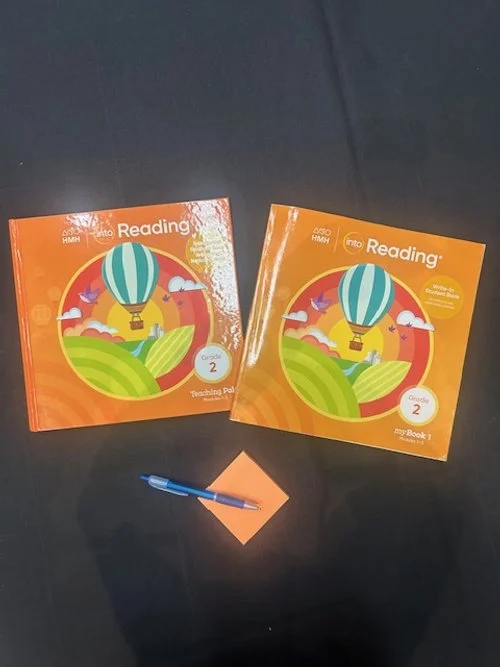SFUSD Teachers Dive “Into Reading”
Over 3 days, in preparation for the upcoming school year, more than 750 K-5 SFUSD instructional coaches, teachers, and ELL instructors gathered for a deep dive into SFUSD’s new literacy curriculum Into Reading. As it has been over a decade since SFUSD adopted a new literacy curriculum, the full-day training offered an important opportunity for teachers to learn how to maximize the use of its diverse literacy tools and lesson plans. The new, unified curriculum will provide a consistent, sequential framework that will enhance teaching and learning and ensure all students have equal access to high-quality educational materials.
Spark was proud to help sponsor the August 2024 SFUSD Literacy Curriculum Institute, and through the launch of the “Ready, Set, Read!” initiative, we will continue to support SFUSD teachers in their work to build literacy proficiency.
During the Into Reading training sessions, Spark team interviewed two teachers who piloted the program last year, Eloise Libre and Charyl Dalapit. Below are edited versions of the interviews.
Interview with Eloise Libre, Instructional Coach, former Second Grade Teacher, Alvarado Elementary School.
Eloise Libre, Instructional Coach, Alvarado Elementary School
Spark: What prompted your transition from classroom teacher to instructional coach?
Eloise Libre: I did the pilot program for the Into Reading curriculum last year and really loved it. That got me really fired up about curriculum and instruction. Seeing the gains that my students have made [during the piloting of Into Reading last year] made me realize the tremendous impact that good instruction can have on our students.
Spark: Can you share your thoughts about the Into Reading curriculum after teaching it during the pilot year?
EL: The way it is highly structured with content that matches consistent routines really worked for me and my students. Thanks to the Into Reading curriculum, I was able to deliver more rigorous content that I have been able to do in the past, with other programs and other resources, which made my students produce a higher level of work, particularly in writing and reading. I saw their reading responses in writing reach levels that I had never seen second graders be able to do before, so it felt really good.
Spark: How do you think the Into Reading curriculum can help reach the district’s goal to improve literacy rates among its student population?
EL: The structure and the routines that are embedded in the curriculum, the rigorous and knowledge-building content as well as the background information that students are being supported to use are all really impactful. There are also a lot of good opportunities for differentiation: in particular I was able to have high ceilings for students needing a challenge and low floors for students who needed more support. Having resources for all of those was really beneficial. Gone are the days of googling for resources!
Spark: Other teachers have mentioned that because the new curriculum is so culturally engaging it will also help alleviate the racial disparities observed in SFUSD students’ literacy rates. Would you agree?
EL: That was my experience last year and what my class data showed: we were able to reach a lot more students, so I’m really optimistic that it is what we can see district-wide too. The resources that are provided are very diverse, interesting and appealing to a wide range of students. This curriculum offers a lot more opportunities for mirrors and windows so students can see themselves and learn about other cultures. That’s very impactful.
Spark: Is there anything else you would want to add?
EL: Quality instruction and quality curriculum are the most high-leverage tools we have in teaching for equity and giving each student what they need in order to succeed, especially for historically underserved populations. That is what I am the most excited about when it comes to this new literacy curriculum.
Interview with Charyl Dalapit, M.A.Ed., Literacy Specialist, instructional Coach, Test Coordinator, Glen Park School
Charyl Dalapit, Instructional Coach, Glen Park School, and her son Rogan
Spark: Can you name three components of Into Reading that were highlights? In other words, resources or aspects from the program that seemed to have a big impact on student learning?
Charyl Dalapit:
The foundational skills slides are comprehensive and easy to follow (especially if you are a starting teacher). The skills are progressive and build upon each other. They are also engaging and fun for students which is key in learning retention.
The core curriculum teaching guide is also full of many resources. Each module follows the same pattern which makes understanding of how to teach the literacy components less stressful for both the teacher and the student. The pacing makes sense and teachers have the wiggle room to use their own creativity in choosing which supplemental components to use or not use based on their student needs.
The collection of Rigby Readers is beautifully organized by level and Module theme, which translates to each student having access to books on their level with just the right amount of rigor, and still staying on track with academic standards. Teachers are able to find texts that are appropriate, engaging, and on level to work with small groups strengthening their Tier 2 instruction within their classroom.
Spark: What did you think about the quality of the stories? Did students like them? (This seems like a common criticism so I am curious to know)
CD: I personally think the quality of the stories were a huge improvement from collections I have seen in the past 20+ years I have been an educator. They introduce texts from all genres with characters that most students can identify with. The texts are rich with vocabulary, stories, images, and ideas. But like many literacy curriculums, it isn't perfect. There are a couple texts that may be a little off the target - but I see this as the teacher's job to work he/r magic and craft to either make it work in a way students can grasp it OR find another text that may work better.
Spark: How did the Into Reading program teach or reinforce foundational skills?
CD: Each module presents foundational skills in a progressive and comprehensive format. They are engaged in games and group practice. Students can reinforce these skills through visual and kinesthetic learning aside from the simple paper and pencil practice. They are provided with visual friendly sound spelling cards and worksheets that can be used as homework or must-do may do practice. We always spiral back to these skills and I appreciate the rigor. I also appreciate that grammar is also an option which has not been part of the literacy curriculum in a very long time.



